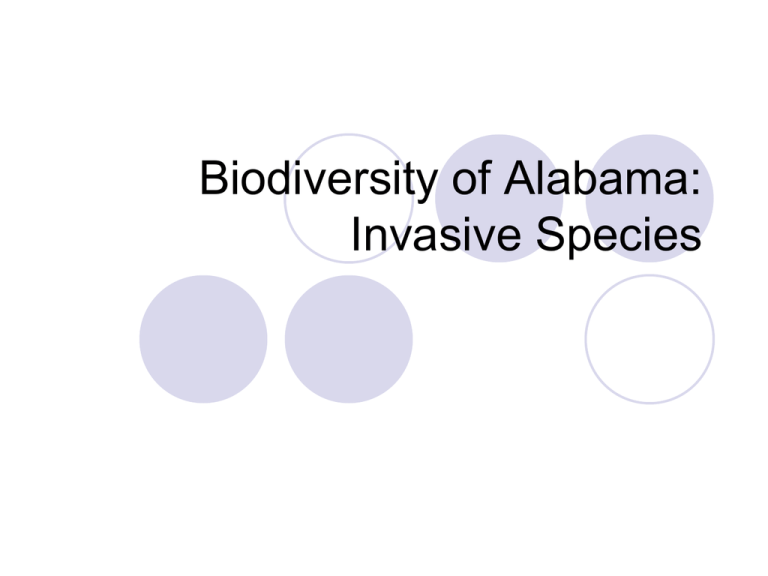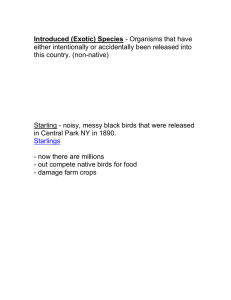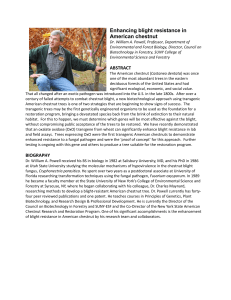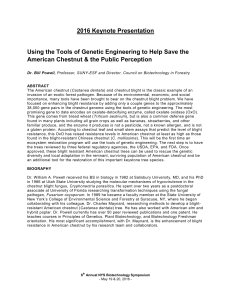Biodiversity of Alabama: Invasive Species
advertisement

Biodiversity of Alabama: Invasive Species Invasive Species Definition: non-native species that are brought into an area and then displace native species Also called exotics, alien species or introduced species Do not have natural predators or competitors 68. Privet Introduced as a hedgerow Spread by birds that eat the fruits Outcompetes native shrubs and trees 69. Kudzu Fast-growing climbing vine from Asia Introduced to control erosion Smothers native plants 70. Cogongrass 1. 2. 3. Introduced from Japan, accidentally and intentionally Reasons it is a problem: Fire hazard Destroys native habitats Livestock can’t eat it 71. Mosquito Fish Small fish with bulbous body An invasive species that was brought here to eat mosquito larvae that live in water 72. European Starling Released into New York City in the late1800s by a man who wanted to introduce to the U.S. all of the birds mentioned in Shakespeare Now widespread across North America Outcompetes many native birds for nest holes 73. House Sparrow European species, now found worldwide Aggressively outcompetes native cavity-nesting birds “French fry birds” – thrive near humans 74. Asiatic Clam Introduced from Asia Very common in Cahaba River where they take over native clam species Sandbar covered with clam shells 75. Japanese Honeysuckle Grows as a vine and chokes out native plants Can survive year-round giving it an advantage over some plants Few natural enemies 76. Hydrilla Clogs waterways, restricting recreation kills other aquatic life by blocking sunlight and using oxygen promotes mosquito breeding 77. Chestnut Blight Chestnut once comprised one-fourth to one-half of eastern U.S. forests, and was prized for its durable wood, and as a food for humans, livestock and wildlife. Today, only stump sprouts from killed trees remain. Chestnut blight is a disease caused by a fungus that infects the tree 78. Wild Boar Sus scrofa Probably introduced by European settlers originally, although subsequent releases of European “feral swine" and illegal trap and transplant operations by hunting enthusiasts have encouraged their hybridization and spread. Considered a direct and aggressive competitor with native wildlife and destroyer of natural plant communities of the state. “Every opportunity for eradication should be undertaken.” 79. Fire Ants The RIFA was accidentally introduced into the United States aboard a South American cargo ship that docked at the port of Mobile, Alabama, in the 1930s, and came to infest the majority of the Southern and Southwestern United States.








